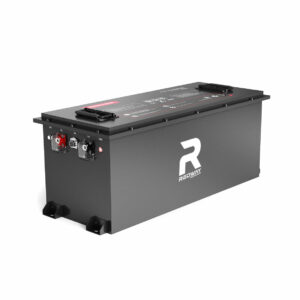What Are the Best Marine & RV Batteries for Extended Boating Expeditions?
Marine and RV batteries designed for extended boating expeditions prioritize deep-cycle performance, durability, and resistance to vibrations. Top options include lithium-ion models like Battle Born LiFePO4 and Dakota Lithium, which offer lightweight designs and long lifespans, as well as AGM batteries such as Renogy Deep Cycle and VMAX SLR. These batteries ensure reliable power for navigation, refrigeration, and onboard electronics during prolonged trips.
How Do Deep-Cycle Batteries Support Extended Boating Trips?
Deep-cycle batteries provide sustained power over long periods, unlike starter batteries. They discharge up to 80% capacity without damage, making them ideal for running appliances, lights, and electronics. AGM and lithium variants excel in deep cycling, with lithium models offering 3,000–5,000 cycles versus 500–1,000 for AGM. Their low self-discharge rates (1–3% monthly) ensure readiness for extended voyages.

For multi-day expeditions, deep-cycle batteries enable continuous operation of critical systems like autopilots and watermakers. Their thick lead plates (in AGM) or stable lithium-iron-phosphate chemistry resist degradation from repeated charging cycles. When configuring a battery bank, boaters should calculate total daily energy consumption and multiply by 1.5 to ensure reserve capacity. Pairing with smart battery monitors like Victron BMV-712 helps track state-of-charge and prevent unexpected power loss. Recent innovations include hybrid systems combining lithium starter/deep-cycle batteries in single units, saving space while providing dual functionality.
| Battery Type | Cycle Life | Discharge Depth |
|---|---|---|
| Flooded Lead-Acid | 300-500 cycles | 50% recommended |
| AGM | 600-1,200 cycles | 80% safe |
| Lithium | 3,000-5,000 cycles | 100% usable |
What Are the Advantages of Lithium-Ion Marine Batteries?
Lithium-ion batteries (LiFePO4) are lightweight, charge faster, and last 5–10 years. They maintain consistent voltage output, ensuring appliances run efficiently. Unlike lead-acid, they’re maintenance-free, resist sulfation, and operate in extreme temperatures (-20°C to 60°C). Brands like Battle Born and Dakota Lithium include built-in BMS for safety, preventing overcharge, overheating, and short circuits.
Best RV Batteries at Sam’s Club
Which AGM Batteries Are Ideal for Rough Marine Environments?
AGM batteries like Odyssey 31M-PC2150 and Renogy Deep Cycle thrive in harsh conditions. Their sealed design resists spills, vibrations, and shocks. With 200–250 Ah capacities, they power trolling motors and fishfinders reliably. AGM batteries handle partial-state-of-charge cycling better than flooded lead-acid, making them suitable for irregular charging during expeditions.
How to Maintain Marine Batteries for Longevity?
Regular maintenance includes checking terminals for corrosion, ensuring 50%–100% charge, and avoiding deep discharges. For AGM, use a charger with desulfation mode. Lithium batteries require minimal upkeep but need balanced cells. Store batteries in cool, dry places and use solar panels or shore power to maintain charge during storage.
Seasonal maintenance should include load testing and capacity verification. For AGM batteries, equalization charges every 6 months help prevent stratification. Always use marine-grade terminal protectors and torque connections to manufacturer specifications. When storing lithium batteries long-term, maintain 50-60% charge and disconnect from all loads. Innovative maintenance tools like ultrasonic cell testers can detect developing issues in lead-acid batteries before failure occurs. Boaters in saltwater environments should rinse battery boxes quarterly to prevent corrosive salt buildup.
| Maintenance Task | AGM Frequency | Lithium Frequency |
|---|---|---|
| Terminal Cleaning | Monthly | Annually |
| Full Charge Cycle | Weekly | Not required |
| Capacity Test | Every 6 months | Every 2 years |
What Are the Best Solar Charging Solutions for Marine Batteries?
Portable solar kits (100W–400W) from Renogy or Goal Zero pair well with MPPT controllers to optimize charging. Flexible panels mount on boat roofs, while foldable designs suit RVs. Lithium batteries charge 2x faster from solar than AGM, with 95% efficiency. Ensure controllers match battery voltage (12V/24V) to prevent overcharging.
“Lithium batteries revolutionize marine power with unmatched cycle life and weight savings. For expeditions, prioritize models with IP67 waterproof ratings and Bluetooth monitoring—like Redway’s ProMariner series. Pair them with high-output alternators to reduce generator dependency. Always size your bank to 1.5x daily usage to account for cloudy days.” — Redway Power Systems Engineer
FAQ
- How Long Do Marine Batteries Last on a Single Charge?
- Runtime depends on battery capacity (Ah) and load. A 100Ah lithium battery running a 10A fridge lasts ~10 hours. With mixed loads (lights, pumps, GPS), expect 8–12 hours. Doubling battery banks extends runtime proportionally.
- Can I Use Car Batteries for My Boat?
- No. Car batteries are starter types, designed for short bursts, not sustained discharge. Marine deep-cycle batteries handle prolonged use without failure.
- Are Lithium Batteries Safe on Boats?
- Yes. LiFePO4 batteries are non-flammable, with built-in BMS for surge protection. They’s safer than lead-acid, which emits hydrogen gas. Ensure proper ventilation and secure mounting to prevent movement.
